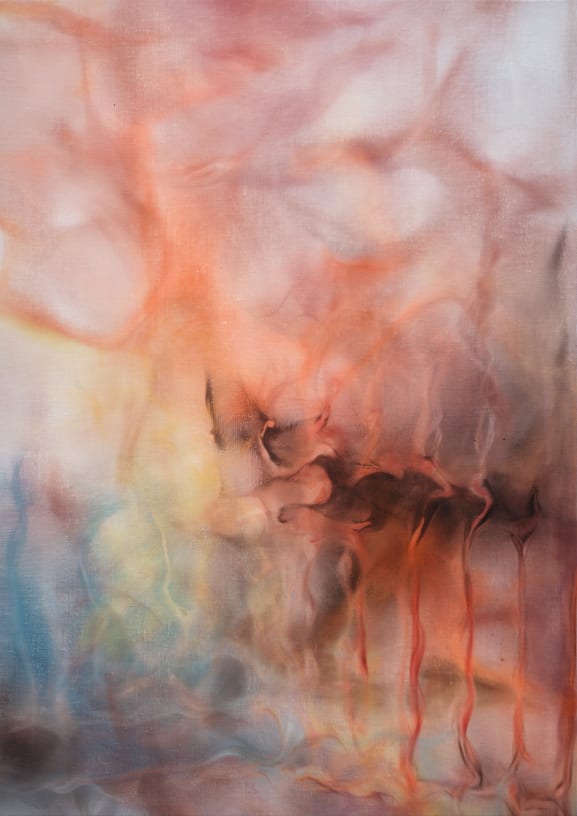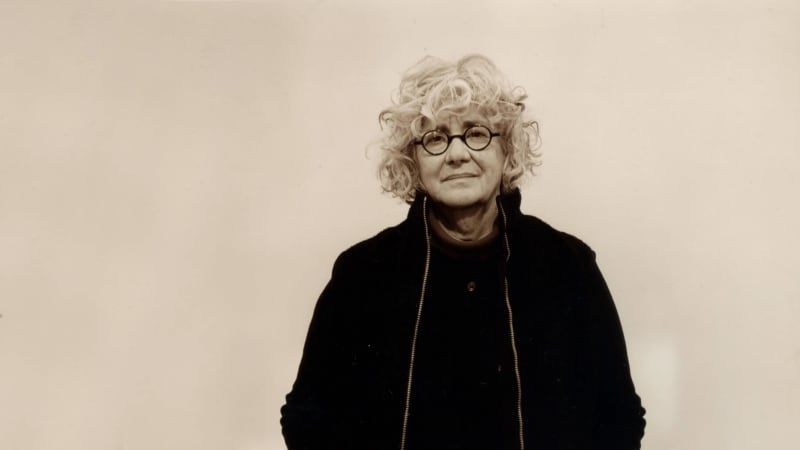Joan Snyder on her first blue-chip show, roses, and the glass ceiling The American artist on her solo exhibition in London . (This link opens in a new tab).
By Anny Shaw
Joan Snyder, who was described in Artforum in 1986 as a “cult phenomenon”, is something of an anomaly. The US painter, now 84, gained critical acclaim early on in her career, showing in museums across the US from 1970 onwards, and has made a decent living selling her paintings. But she is still considered an outsider in the UK and Europe, and has not been represented by a blue-chip gallery—until now.
Snyder still seems unsure of why that is. “Because they didn’t like my work? Because they thought I’m a feminist?” she questions. The artist is speaking in the offices at Thaddaeus Ropac gallery in London, where her exhibition, Body and Soul, opened last week (until 5 February 2025). The Austrian dealer took Snyder on in February, swiftly mounting this, her second major show in the UK; the first was in 2019 with the now defunct Blain Southern gallery.
As a woman working through the male-heavy Abstract Expressionist and Minimalist eras, Snyder considers herself one of the lucky ones, even if blue-chip gallery representation, and all the advantages that come with that, remained elusive. “I always had galleries, I always made a good living, starting from the 1970s. It wasn’t for a lack of the paintings being very sellable. They just didn’t want me,” she says. “I even knocked on some doors”— but never the likes of Gagosian or David Zwirner: “I never pursued the big four or five, they always scared me.”
The London exhibition charts the breadth of Snyder’s 60-year-long career, which took off in the late 1960s with the development of her Stroke paintings—works consisting of brushstrokes distilled to their very essence. “The first really good painting I made, my real breakthrough was in 1969 with Lines and Strokes,” Snyder remembers. “It was crystal clear exactly what I wanted to do. It was simple, I was painting paint strokes. It was just raw canvas, primed with rabbit skin glue and a very simple grid drawn with pencil. Somehow it got to the heart of everything I’d been trying to do all those years.”
Those works earned Snyder a glowing reputation as well as a long line of new friends—though not all well-meaning. “There were a lot of people in my life, and I got confused about who were and who weren’t my friends,” she says. “There was huge list of people who wanted the paintings, but I had to move on.” The Stroke paintings had, Snyder says, become “too easy”.
She and her than husband, the photographer Larry Fink, bought a farm in Pennsylvania, where Snyder “isolated” herself and began to work on a new body of work that dealt with what the artist describes as “the whole concept of female sensibility”. Her paintings became expressionist, as well as autobiographical and political, incorporating materials that began to protrude from the canvas: straw, rose petals, berries, mud and fabric. “Everywhere I was seeing young women being autobiographical, using materials, sewing, just doing lots of different things that we hadn't talked about, or we hadn't seen,” Snyder says. “Feminism was working its way into my work in a big way, even though it was there in the mid-1960s, but it really came back.”









































































































































































